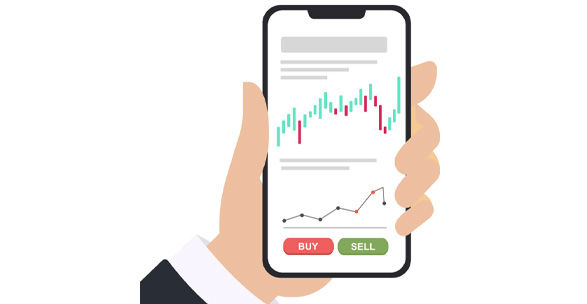College - Types of Traders
Since the inception of the foreign exchange market, trading insights and strategies have been available to the public. So, why do only ...

Various Types of Traders and Styles
Since the inception of the foreign exchange market, trading insights and strategies have been available to the public. So, why do only a minority of traders succeed? The reality is that your long-term success as a trader often hinges on your trading personality and certain character traits. Just like in life, conquering difficult challenges often means overcoming internal battles. Trading will become a part of your life, and you'll be living and breathing it daily! But who says you can’t do that while relaxing on a beach? Each of us has our own trading styles and preferences. Trying to trade in a way that doesn’t align with your personality will only lead to inconsistency and frustration. Unfortunately, many traders don’t take the time to assess their strengths and weaknesses, which leads them to repeat the same mistakes over and over. So, what do you need to understand about yourself and your trading approach?

The Slow, Patient Trader
Patience is a key virtue in forex trading, especially in a highly volatile market. Many traders allow their fear of missing out on opportunities to push them into impulsive trades. In contrast, the patient trader holds positions for an extended period, allowing trades to "breathe" without stressing about short-term fluctuations. This patient approach leads to a more relaxed and less stressful trading life. Patient traders are willing to let trades sit at breakeven for days, sometimes sacrificing quick entries for the potential of more substantial long-term gains. In many cases, less is more when it comes to trading.

The Impatient, Fast Trader
On the other hand, fast-paced traders execute multiple trades throughout the day, keeping a close watch on several currency pairs to time their entries perfectly. While they may benefit from sideways markets, these traders miss out on the longer-term market swings. Additionally, they often find themselves glued to the computer screen for long hours. To achieve long-term consistency, fast traders must impose a high level of discipline to avoid erratic behavior and over-trading. Multiple trade executions require both precision and a calm mindset.

Full-Time/Part-Time Trader
Your trading style will also depend on how much time you can dedicate to monitoring the markets. Many individuals quit their full-time jobs prematurely to trade full-time, only to fail due to lack of preparation. At Trade Tab University, we strongly advise gaining sufficient knowledge and experience before committing to full-time trading. If you find yourself trading because you feel like you "need to" or "must" succeed, stop right there. Trading from a place of pressure and negativity will only harm your psychological state as a trader. Remember, trading and technical analysis are arts, and mastering them takes time. For those who don’t have all day to watch the market, analyzing a currency pair’s trend on higher timeframes can help secure reasonable percentage gains while allowing you to enjoy the freedom that trading offers.

The Scalping Approach
Scalping refers to high-frequency trading, characterized by multiple trade executions throughout the day. Scalpers focus on small timeframes like 1- minute, 5-minute, or 15-minute charts, aiming to catch pips from quick market movements. If you're a scalper, you need to be fast and ready to react at a moment’s notice. While scalping can be profitable, it also requires intense focus and can significantly increase stress levels. Scalping is typically suited for full-time traders who have the time and mental capacity to watch the markets all day. Maintaining discipline is crucial for long-term success in this style. For example, a scalper might trade with $10 per pip. A 5-pip movement could net $50. If this is done successfully five times a day, the trader could earn $250. However, no profits are guaranteed, and high leverage is often required to make scalping worthwhile. The scalper’s goal is simple: execute trades swiftly, grab the pips, and exit. However, many scalpers trade strategically by targeting periods of high volatility or trading based on major macroeconomic news releases.

Swing Trading
Swing trading is a method often used by professional traders and investors. Unlike scalping, swing trading involves holding positions for days, weeks, or even months. This style doesn’t require constant market monitoring but allows traders to focus on analyzing the market for a few hours each day. Swing traders aim to enter trades during market retracements, riding the momentum of larger trends. The goal is to avoid entering the market unless there’s a high probability of success. Swing traders may use a more relaxed approach and target trades with the potential for significant gains. Swing traders rely on the following timeframes for analysis, often using 4-hour charts to finetune their entries:
- Monthly
- Weekly
- Daily Substantial capital can give swing traders the flexibility to risk a manageable amount while letting trades develop over time. For example, a trader with $100,000 might risk 2% to gain 4%, potentially making $4,000 in 2-3 weeks. However, a trader with only $1,000 might find it less appealing to wait that long for a $40 gain, which is where medium swing trading comes in. Medium swing trading targets smaller pip movements and involves using multiple timeframes to pinpoint more precise entries. This approach combines technical analysis with overall market momentum, maximizing the potential of a trade.

Fundamental Trader
Fundamental traders, also known as macroeconomic traders, focus more on news releases than on technical chart analysis. This approach is popular in stock and equity markets, but some forex traders attempt to use the same principles. Unfortunately, due to market manipulation and diverse factors in forex, relying solely on fundamentals can lead to failure. Commonly traded news releases include:
- Inflation rates
- Gross Domestic Product (GDP)
- Trade balance
- Employment growth
- Interest rates Fundamental traders must stay up to date with global economic data and rumors, making it a full-time job. High-impact news events often lead to high volatility, and brokers can take advantage of rookies during these periods by widening bid-ask spreads, increasing costs for the trader.

Be wary of systems that promise to deliver news faster than anywhere else. News is released to the public at the same time, and trying to get ahead of it leads to risky behavior. Your trading style should align with your personality, time availability, and risk tolerance. Whether you’re a slow, patient trader, a fast-paced scalper, or a long-term swing trader, consistency comes from self-awareness and discipline. Understanding which type of trader you are will help you avoid common pitfalls and move toward long-term success
Your trading style should align with your personality, time availability, and risk tolerance. Whether you’re a slow, patient trader, a fast-paced scalper, or a long-term swing trader, consistency comes from self-awareness and discipline. Understanding which type of trader you are will help you avoid common pitfalls and move toward long-term success